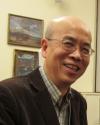This is a fully online asynchronous, distance-learning course, except for the final exam. No in-person attendance is required. The final exam will be held synchronously on June 9 (Mon) at 7-9 pm Seattle time. All students must take the exam at that time.
| Instructor: | Kam Wing Chan |
| Email: | kwchan@uw.edu |
| Office hours: |
Time: Tue 11 am-12 noon Zoom: If you want to meet in person, please schedule with me. |
| Number of Credits: | 5 |
| Required Textbook: | No |
Often described as the largest migration in human history, internal migration in China—driven by urbanization—has been a key force in the country’s economic growth. Over the past four decades, Chinese migrant workers have played a crucial role in the global economy. China’s economic strategy has focused on rapid industrialization within a rural-urban dual socioeconomic framework, creating a vast pool of highly exploitable labor. By 2020, this labor force had reached approximately 170 million, comparable in size to the total U.S. workforce.
This course begins with a brief overview of China’s recent history and geography before examining the institutions and state-created rural-urban duality that underpin this strategy. A central tool of the state is the household registration (hukou) system, which regulates geographic mobility and access to social services. Before 1980, rural residents were prohibited from migrating to cities and were confined to agricultural work to support industrialization. In the early 1980s, they were gradually allowed to take low-wage industrial and service jobs in urban areas but remained excluded from urban welfare and services. This vast supply of inexpensive labor has enabled China to dominate global manufacturing, reshaping both production landscapes and social dynamics. The resulting separation of millions of families has profoundly affected the lives, work, and opportunities of many individuals while carrying significant implications for the global community.
Topics to Cover:
1. Overview of China
2. Industrialization strategy and rural-urban divide
3. The hukou system and migration
4. Migration in Mao's era
5. Migrant labor and the "world's factory'
6. The geography of migration
7. Children of migrants
8. Migration and China's future
